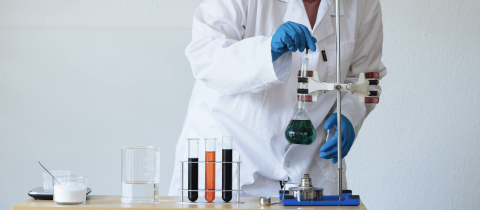Buying toys used to be easy. You went into a toy store, looked around and found something you liked. What mattered was whether the rubber ducky had an appealing look and feel or whether the doll had flexible joints. You didn’t think about the kind of plastic that was used to make the toy or whether it contained plasticizers. Nor did you wonder about the heavy metals such as lead, mercury or chromium that might lurk in the paint. Today, however, buying a toy has become a scientific puzzle. Is it made of polyvinyl chloride or polyethylene. Is it plasticized or not? And if so, with which plasticizer? Is there any lead that might leach out if the toy is chewed? Are the amounts significant? Given that children are our most precious natural resource, these are legitimate issues. Especially since children are not little adults. During the developmental stage small amounts of chemicals which would be inconsequential in terms of risks to adults may present a risk for children. Metals such as lead and mercury are a case in point. They can have long term consequences even if consumed in trace amounts, as can happen if children put toys into their mouths. And that is just the reason why toy importers and large toy stores are are investing in some pretty expensive scientific equipment. Like x-ray fluorescence analyzers. These hand-held instruments which resemble a hair dryer can quickly detect the presence of heavy metals such as lead, mercury, chromium and arsenic in a sample. But they don’t come cheap. Roughly $40,000 each.
X-ray fluorescence is often taught in first year general chemistry courses. And students usually rebel at learning what they think is esoteric, impractical theory. Essentially, here is what they are told. When x-rays, generated by either an electronic x-ray tube or by radioactive atoms are focused on a metal atom, electrons from the innermost orbital are knocked out of the atom. Then electrons from higher energy orbitals jump down to take the place of the missing electron and in the process emit x-rays of a wavelength characteristic of the energy difference between the orbitals involved. These energy differences in turn are characteristic of specific metals. So that determining the emitted x-rays can reveal which metals are present. That does sound complex and esoteric, doesn’t it? But it becomes very meaningful when put into a practical context. Students perk up when they are told that this technology can determine the presence of lead in paint, or arsenic in food. And with all of our environmental worries this is becoming more and more important. Recently at a workshop set up by a non-government safety organization in the U.S. a sampling of toys revealed the presence of 200 ppm of lead in a toy vacuum cleaner. The accepted safety level is 40 ppm. There were also 250 ppm of mercury, and the level should be zero. A toy doctor’s kit contained 386 ppm of arsenic, with 20 being an acceptable level. Perhaps some of those students who now object to learning the nuances of x-ray fluorescence will be stimulated by these novel practical applications to consider careers in chemistry and design toys made with chemicals that do not give rise to safety concerns.







